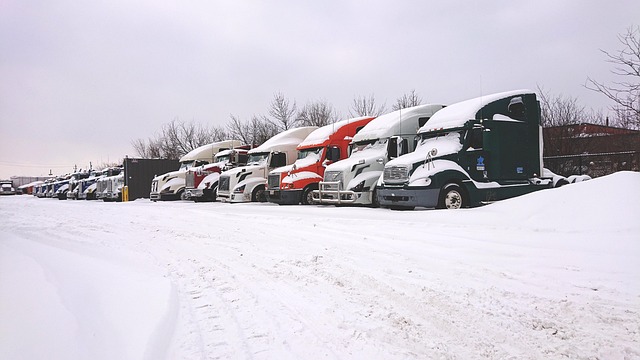Learn how to register your car in California with our step-by-step guide. This comprehensive process includes understanding key requirements, gathering essential documents for VIN verification, performing a vehicle identification number (VIN) check, selecting the right registration method, and submitting applications along with necessary fees. Ensure a smooth experience by following these critical steps, especially when it comes to crucial VIN verification.
- Understand California Car Registration Requirements
- Gather Necessary Documents for VIN Verification
- Perform Vehicle Identification Number (VIN) Check
- Choose an Appropriate Registration Method
- Submit Application and Pay Fees
Understand California Car Registration Requirements

Before diving into the registration process, it’s crucial to understand California’s car registration requirements. These include ensuring your vehicle meets safety and emissions standards, as well as providing proof of insurance and valid identification. One key aspect is verifying the Vehicle Identification Number (VIN), often through a process like mobile VIN verification or a traditional VIN inspection. This step is essential for tracking vehicle history and preventing theft.
California requires accurate and up-to-date information, so make sure all details on the registration form match your car’s specifications. This includes the vehicle’s make, model, year, and unique VIN. Should you need assistance with this process, consider using a mobile VIN verifier to streamline the verification step, ensuring a smoother registration experience.
Gather Necessary Documents for VIN Verification

Before registering your car in California, you’ll need to gather several key documents for a successful VIN verification process. The Vehicle Identification Number (VIN) is a unique code that identifies your vehicle, and it’s crucial during registration. Ensure you have your car’s VIN, which can usually be found on the vehicle’s certificate of title or registration from a previous state, as well as on the dashboard near the driver’s side window.
For a mobile vin verification or vin inspection, you’ll also require documents such as proof of insurance, a valid driver’s license, and perhaps even a purchase agreement or lease document if you’ve recently acquired the vehicle. These documents verify your identity and the car’s ownership status, which are essential steps in California’s registration process.
Perform Vehicle Identification Number (VIN) Check

Before registering your car in California, it’s crucial to perform a Vehicle Identification Number (VIN) check. This step is essential for ensuring that the vehicle you’re about to register is legitimate and has not been reported stolen or had its identity altered. A mobile VIN verifier can be a convenient option here, allowing you to conduct this verification from the comfort of your location.
By utilizing a mobile VIN inspection service, you can quickly cross-reference the provided VIN with databases to gain valuable information about the vehicle’s history. This includes details on previous owners, maintenance records, and any reported accidents or damages. Ensuring accuracy in these initial steps is key; it helps prevent potential issues and ensures a smoother registration process for your new car in California.
Choose an Appropriate Registration Method

When registering your car in California, understanding the available registration methods is key. The state offers both traditional in-person visits to DMV offices and several online options, including a mobile vin verification service. This flexibility caters to different preferences and lifestyles, ensuring a convenient process for all residents.
For those opting for digital solutions, a mobile vin inspector app can streamline the initial steps by providing vin inspection services right from your smartphone. This method not only saves time but also ensures accuracy through digital record-keeping and VIN verification, a crucial step in the registration process that verifies the vehicle’s history and identity.
Submit Application and Pay Fees

Once you have gathered all necessary documents and passed the California vehicle inspection, it’s time to submit your application for registration. This process involves completing a formal application and paying the required fees. The application typically asks for detailed information about your vehicle, including its make, model, year, and unique Vehicle Identification Number (VIN). This VIN is crucial for verification purposes, so ensure it’s accurate and easily readable.
For added convenience, many services offer mobile VIN verification or inspection, allowing you to complete this step from the comfort of your home or garage. These options streamline the registration process by providing instant and on-site checks, respectively, ensuring that all paperwork is in order before submitting your application and paying the fees.
Registering a car in California involves understanding state requirements, gathering essential documents, completing a VIN verification, selecting the right registration method, and submitting applications along with fees. By adhering to these steps and ensuring accurate VIN verification, you can successfully navigate the process, ensuring your vehicle’s legal status in the Golden State.



